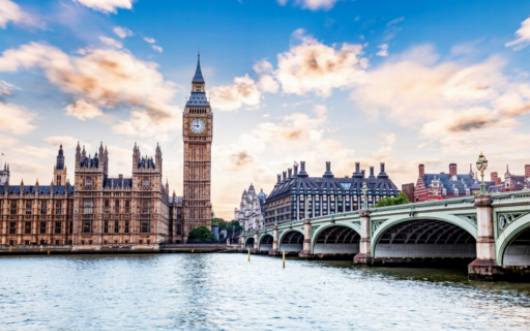The Gherkin, also known as 30 St Mary Axe, stands as an iconic symbol of architectural innovation in the heart of London's financial district. This unique skyscraper, designed by world-renowned architect Norman Foster, has not only redefined the city's skyline but has also revolutionized sustainable building practices in the modern era. The challenges faced during its construction and the pivotal role of technology in its design have set a new standard for future skyscraper projects around the world.

Sustainable Architecture Practices at the Gherkin
Designed by architect Norman Foster and built by engineering firm Arup, the Gherkin boasts numerous features that contribute to its environmentally friendly design.
One of the key sustainable aspects of the Gherkin is its unique double-skin facade, which helps to regulate the building's temperature and reduce the need for heating and cooling. The outer layer of glass panels acts as a thermal buffer, while the inner layer provides insulation, helping to minimize energy loss. This innovative design not only reduces the building's carbon footprint, but also enhances the overall comfort and well-being of its occupants.
In addition to its energy-efficient facade, the Gherkin also incorporates a variety of other sustainable features. The building's natural ventilation system, for example, helps to minimize the need for mechanical cooling, while its integrated solar panels generate clean renewable energy. The Gherkin also utilizes rainwater harvesting and recycling systems to reduce water consumption, as well as green roofs and atrium gardens to enhance biodiversity and improve air quality.
Overall, the Gherkin showcases how sustainable architecture practices can be seamlessly integrated into a modern skyscraper design. By prioritizing energy efficiency, water conservation, and green spaces, the Gherkin sets a high standard for environmentally responsible building practices in the 21st century.
The Influence of the Gherkin on Modern Skyscraper Design
The Gherkin, officially known as 30 St Mary Axe, has significantly impacted modern skyscraper design. With its distinctive and innovative architecture, the Gherkin has served as a source of inspiration for architects around the world. Its unique shape, made up of a series of diamond-shaped glass panels, has become a signature feature in many contemporary skyscrapers. The Gherkin's design showcases how creativity and sustainability can coexist in architectural masterpieces, setting a new standard for future high-rise buildings. Additionally, the building's efficient use of space and natural lighting has influenced the design of other skyscrapers, making them more environmentally friendly and visually appealing. In essence, the Gherkin has left a lasting legacy on modern skyscraper design, pushing the boundaries of what is possible in the world of architecture.
Challenges Faced During the Construction of the Gherkin
The construction of the Gherkin was not without its challenges. One of the main obstacles faced during the building process was the unique shape of the structure. The Gherkin's distinctive curved glass facade meant that traditional construction methods were not sufficient, requiring innovative solutions to ensure stability and structural integrity.
Additionally, the location of the Gherkin presented challenges as well. Situated in the heart of London's financial district, the construction site was limited in space and surrounded by other buildings. This made logistics such as material delivery and crane operations difficult, requiring careful planning and coordination to avoid disruptions to the surrounding area.
Furthermore, the sustainability goals of the Gherkin posed a challenge during construction. The building was designed with energy-efficient features such as natural ventilation and solar shading, which required specialized materials and construction techniques to implement. This added complexity to the construction process and required collaboration between architects, engineers, and contractors to achieve the desired sustainability objectives.
In conclusion, the construction of the Gherkin presented various challenges, from the unique design and location of the building to the sustainability goals that required innovative solutions and careful planning. Despite these obstacles, the successful completion of the Gherkin stands as a testament to the ingenuity and perseverance of the architects and construction team involved in this groundbreaking project.
The Role of Technology in the Architectural Innovation of the Gherkin
The Gherkin, also known as 30 St Mary Axe, is a prime example of architectural innovation in modern skyscraper design. One of the key factors that contributed to the unique and iconic shape of the Gherkin is the use of advanced technology in its construction. Technology played a crucial role in the development of this architectural marvel, allowing architects and engineers to push the boundaries of what was possible in skyscraper design.
One of the most notable technological advancements used in the construction of the Gherkin was the use of computer-aided design (CAD) software. This technology allowed architects to create intricate and complex designs that would have been challenging to achieve using traditional drafting methods. CAD software also enabled architects to simulate various design iterations, allowing them to optimize the building's shape and structure for both aesthetics and functionality.
In addition to CAD software, advanced structural engineering technologies were also used in the construction of the Gherkin. Engineers utilized advanced modeling software to analyze the building's structural integrity and ensure that it could withstand various environmental factors, such as wind loads and seismic activity. This technology helped architects and engineers to design a skyscraper that was not only visually stunning but also structurally sound.
Another important technological innovation that played a role in the construction of the Gherkin was the use of sustainable building materials and construction techniques. By incorporating energy-efficient systems and materials into the building's design, the Gherkin was able to achieve high levels of sustainability and reduce its environmental impact. This commitment to sustainability set a new standard for future skyscraper projects, influencing the way architects and developers approach sustainable building practices.
Overall, the role of technology in the architectural innovation of the Gherkin cannot be understated. From advanced design software to sustainable construction techniques, technology played a crucial role in pushing the boundaries of skyscraper design and creating a truly iconic building in the heart of London's skyline.
